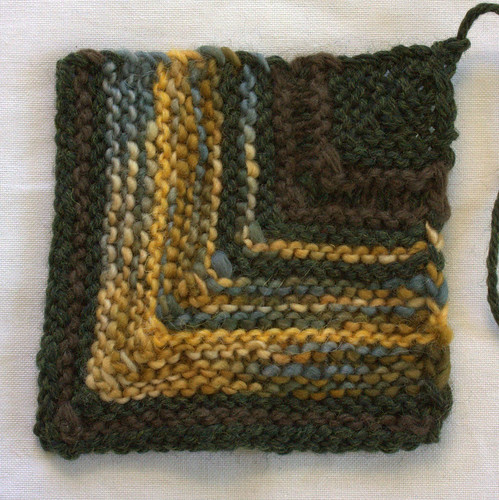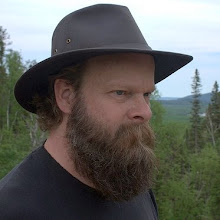
Friday afternoon Sylvie and I planted vegetables in the narrow soil border along the parking lot behind the building where I live. This will be the garden's second season. I'm trying to dig myself deeper into the soil.
American farmer, poet and economic critic Wendell Berry has said, "Urban people are connected to the land by their gastrointestinal tract." It's a tenuous relationship.
I grew up in the country and began learning principles of organic gardening from Ranger Rick magazine, but my family were city people so I had to learn more from experience than example. Early attempts at a vegetable garden were overrun by quackgrass and I did not develop faith in the Earth until much later.
During the 1990s I lived for three years on top of a hill of glacial gravel and attempted to establish a garden there. Preceding tenants had drenched the lawn with chemicals. The soil was dry and lifeless. I began by applying a few principles of permaculture I had read, laying down layers of newsprint, covering it with grass clippings, dried leaves, manure and any other organic material I could lay my hands on, and planting vegetable seedlings through these layers into the stony soil below.
The first two years were disappointing. Blight stunted the tomato and potato plants, while groundhogs ate practically everything else. I learned the creatures were attracted to cabbage crops, so by eliminating broccoli, Brussels sprouts and kohlrabi from the plan I persuaded rodents to leave everything else alone.
But more importantly, two years of adding voluminous organic material to the soil finally paid off. During the third summer the garden produced bumper crops of tomatoes, beans, onions and sweet corn.
It was a revelatory experience. I learned that you don't feed vegetables, you feed the soil. It is a complete ecosystem containing more species diversity than a tropical rainforest. Microscopic bacteria, fungi and protozoans, tiny nematodes, springtails and mites, larger earthworms, beetles and colonial insects, and the small mammals and birds that feed on them are members of an interdependent community. They support the cycles of water, gases and nutrients and maintain the soil structure that fosters healthy plants. Recent research has revolutionized understanding of how plants grow. For years farmers knew that the roots of certain crops harboured beneficial bacteria that fixed atmospheric nitrogen and made it available to plants, but we now realize plant roots depend on healthy symbiosis with a wider range of organisms. For example many tree species depend on symbiotic relationships between their roots and certain fungi.
If you have a garden, take time this season to think about what you're feeding it. If not, consider it whenever you pause to admire a rose, or pick up fresh produce from the supermarket. Many of us were raised to abhor dirt, but healthy soil is more valuable to life than pure gold.
While planting tomatoes, beans, peppers, chard and herbs, I got the idea to knit a square that would illustrate the dark beauty of the soil and its relationship to plants we depend on for food. It is not all bucolic and lovely either. Healthy dirt reminds us that nature depends on a healthy balance between life and death. We can't have one without the other. Beneath our feet carry on countless tales of predator and prey. Soil smells good when it is full of killing, eating, rotting, growing and breeding.
This square is comprised of four yarns: background Cascade in deep green, a brown three-ply wool I hand-dyed with black walnut, a variegated Malabrigo merino worsted in shades of growing plants, and an accent of yellow Létt-Lopi to highlight the relationship to sunlight.


Thanks for the shout-out for Ranger Rick!
ReplyDeleteWe love our readers, past and present.
Carry it on!
Cheers,
Libby Schleichert, Sr. Editor
Ranger Rick Magazine
National Wildlife Federation
Reston, VA
Libby, thanks for your comment! I loved Ranger Rick. I even had a limerick published in the magazine when I was 9 or 10! I didn't quite get the metre right, but it is cute. I know it by heart:
ReplyDeleteThere was a little house mouse
who decided to build a mouse house.
"The field is a nice place.
I'll make curtains from Queen-Anne's-lace,
and my neighbour is Mr. Ruffed Grouse."